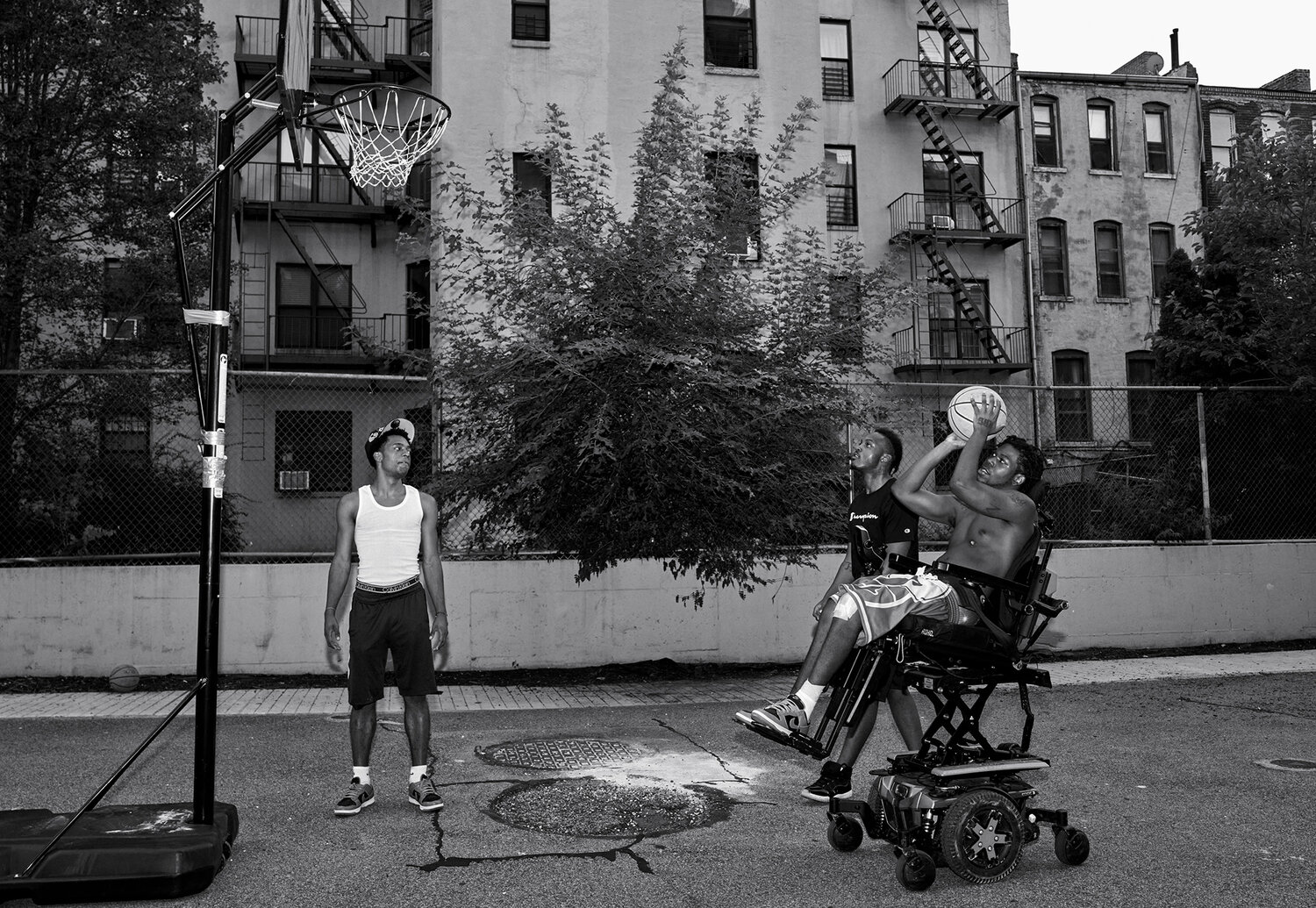Capturing indelible images of gun violence’s impact
Dr. Greg Gulbransen, a local pediatrician, has turned his lens on a different kind of public health crisis with his new book of photography, “Say Less.” The book captures the stark reality of gun violence affecting young Black people in the South Bronx, focusing on Malik, a local leader of the Crips gang who is paralyzed from the waist down as a result of gun violence.
Gulbransen got the idea for the book when he was advocating for automobile safety following the death of his son, Cameron. He played a significant role in the federal legislation making backup cameras mandatory in cars.
Eventually he began to focus on other dangers facing American youth, and one in particular stood out to him. “Over time, gun violence has become the number one killer of young people in America, according to the CDC,” he said, referring to the Centers for Disease Control and Prevention.
Several years ago, he started venturing into the South Bronx to photograph kids. He initially aimed to highlight positive initiatives like the Bikes Up, Guns Down movement, which encourages inner-city youth to get involved in motor sports as an alternative to gangs.
But Gulbransen noticed a troubling number of young people in wheelchairs, victims of spinal cord injuries caused by gun violence. The more he learned about it, the more his focus shifted to documenting the impact of these shootings.
“I thought, I’m going to take this one neighborhood and try to photograph as many people as I can who were shot in this neighborhood,” Gulbransen said. “That was a crazy undertaking, because how do you find these people? A lot of them don’t want to have their story told.”
This project led him to Malik, who was shot in 2018 and paralyzed. His story, and those of others in his apartment building who had similar experiences, became central to the book.
“Say Less,” which is being published by Gost and is scheduled to be released on Aug. 19, is a culmination of four and a half years of work, during which Gulbransen made numerous trips to the South Bronx, often on weekends and after work. His skills as a physician played a crucial role in gaining the trust of his subjects. His medical knowledge was vital in addressing the needs of those like Malik, who requires ongoing medical care for complications related to his paralysis.
“You’re trying to tell the story from both sides of the brain at the same time, because it’s a health care issue, and I’m worried about their health,” Gulbransen explained. “As a doctor, it interests me, and also, I felt it was important to just try to tell the story of this public health emergency.”
Malik’s story is one of resilience and tragedy. His gang, the ADG Crips, rivaled Jakz Boyz, another local gang, leading to violent confrontations, including Malik’s shooting by Jose Canon, of Jakz Boyz. Despite the danger, Gulbransen’s persistence and his ability to build relationships helped him win Malik’s trust.
The book also sheds light on the broader context of gun violence in inner-city neighborhoods. Gulbransen noted that while mass shootings capture headlines, it’s the daily toll of gang violence in some of the nation’s largest cities that illuminates the crisis.
“There’s gun violence of all shapes and forms, and it’s all horrible,” he said. “But that’s actually not what drives the numbers up; it’s the day-in-and-day-out shootings in New York, Chicago, Detroit, L.A. and all of these other cities.”
Gulbransen’s approach to photography is deeply influenced by his background and family history. Choosing to shoot in black and white, he aimed to capture the essence of his subjects without the distraction of color.
“It allows me to sort of get into the soul,” he said. “There’s actually very little color in the Bronx. It’s more of a tone thing, dark rooms, low lighting, dark colors.”
This artistic choice, inspired by his grandfather’s black-and-white photography of New York City in the 1920s and ’30s, underscores the raw reality of the scenes he captured. He is hopeful, he said, that the book will raise awareness of the public health crisis of gun violence.
Gulbransen acknowledged that there are no easy answers, but he hopes that telling these stories might inspire change. At the heart of his hope is Malik’s son, Royal, nicknamed Little Bullet. Gulbransen aspires to break the cycle of violence that has plagued Malik’s family for generations.
“The idea here is, let’s continue to tell this story and see if somehow we can keep Little Bullet out of the world of gang violence as he ages,” he said. “I have to be hopeful that somehow, by being involved with his family and telling this story and having this book around, by working with this boy and helping to teach and educate him, hopefully it will help to stop this cycle.”
For more information on “Say Less” and its release, visit GostBooks.com.






